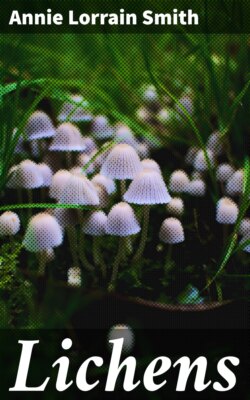Читать книгу Lichens - Annie Lorrain Smith - Страница 25
На сайте Литреса книга снята с продажи.
G. Synthetic Cultures
ОглавлениеSchwendener’s “dual hypothesis,” as it was termed, excited great interest and no little controversy, the reasons for and against being debated with considerable heat. Rees[189] was the first who attempted to put the matter to the proof by making synthetic cultures. For this purpose he took spores from the apothecium of a Collema and sowed them on pure cultures of Nostoc, and as a result obtained the formation of a lichen thallus, though he did not succeed in producing any fructification. He observed further that the hyphal filaments from the germinating spore died off when no Nostoc was forthcoming.
Bornet[190] followed with his record of successful cultures. He selected for experiment the spores of Physcia (Xanthoria) parietina and was able to show that hyphae produced from the germinating spore adhered to the free-growing cells of Protococcus[191] viridis and formed the early stages of a lichen thallus. Woronin[192] contributed his observations on the gonidia of Parmelia (Physcia) pulverulenta which he isolated from the thallus and cultivated in pure water. He confirmed the occurrence of cell division in the gonidia and also the formation of zoospores, these again forming new colonies of algae identical in all respects with the thalline gonidia. He was able to see the germinating tube from a lichen spore attach itself to a gonidium, though he failed in his attempts to induce further growth. In our own country Archer[193] welcomed the new views on lichens, and attempted cultures but with very little success. Further synthetic cultures were made by Bornet[194], Treub[195] and Borzi[196] with a series of lichen spores. They also were able to observe the first stages of the thallus. Borzi observed spores of Physcia (Xanthoria) parietina scattered among Protococcus cells on the branch of a tree. The spores had germinated and the first branching hyphae had already begun to encircle the algae.
Fig. 5. Endocarpon pusillum Hedw. Asci and spores, with hymenial gonidia × 320 (after Stahl).
Fig. 6. Endocarpon pusillum Hedw. Spore germinating in contact with hymenial gonidia × 320 (after Stahl).
Additional evidence in favour of the theory of the independent origin of the colourless filaments and the green cells was furnished by Stahl’s[197] research on hymenial gonidia in Endocarpon (Fig. 5). By making synthetic cultures of the mature spores with these bodies, he was able to observe not only the germination of the spores and the attachment of the filaments to the gonidia (Fig. 6), but also the gradual building up of a complete lichen thallus to the formation of perithecia and spores.
Fig. 7. Germination of spore of Physcia parietina De Not. in contact with Protococcus viridis Ag. × 950 (after Bornet).
Fig. 8. Physcia parietina De Not. Vertical section of thallus obtained by synthetic culture × 130 (after Bonnier).
Some years later Bonnier[198] made an interesting series of synthetic cultures between the spores of lichens germinated in carefully sterilized conditions, and algae taken from the open (Figs. 7 and 8). Separate control cultures of spores and algae were carried on at the same time, with the result that in one case lichen hyphae alone, in the other algae were produced. The various lichen spores with which he experimented were sown in association with the following algae:
(1) Protococcus.
Pure synthetic cultures of Physcia (Xanthoria) parietina were begun in August 1884 on fragments of bark. In October 1886 the thallus was several centimetres in diameter, and some of the lobes were fruited.
Physcia stellaris was also grown on bark; in one case both thallus and apothecia were developed.
Parmelia acetabulum, another corticolous species, formed only a minute thallus about 5 mm. in diameter, but entirely identical with normally growing specimens.
(2) Pleurococcus.
Lecanora (Rinodina) sophodes, sown on rock in 1883, reached in 1886 a diameter of 13 mm. with fully developed apothecia.
Lecanora ferruginea and L. subfusca after three years’ culture formed sterile thalli only.
Lecanora coilocarpa in four years, and L. caesio-rufa in three years formed very small thalli without fructification.
(3) Trentepohlia (Chroolepus).
Opegrapha vulgata in two years had developed thallus and apothecia. The control culture of the spores formed, as in nature, a considerable felt of mycelium in the interstices of the bark, but no pycnidia or apothecia.
Graphis elegans. Only the beginning of a differentiated thallus was obtained with this species.
Verrucaria muralis (?)[199] gave in less than a year a completely developed thallus.
Bonnier also attempted cultures with species of Collema and Ephebe, but was unsuccessful in inducing the formation of a lichen plant.
